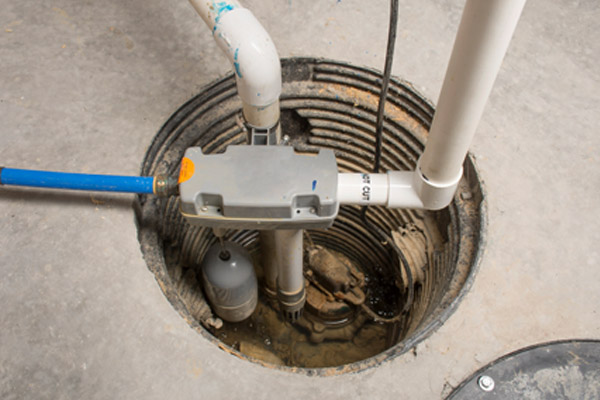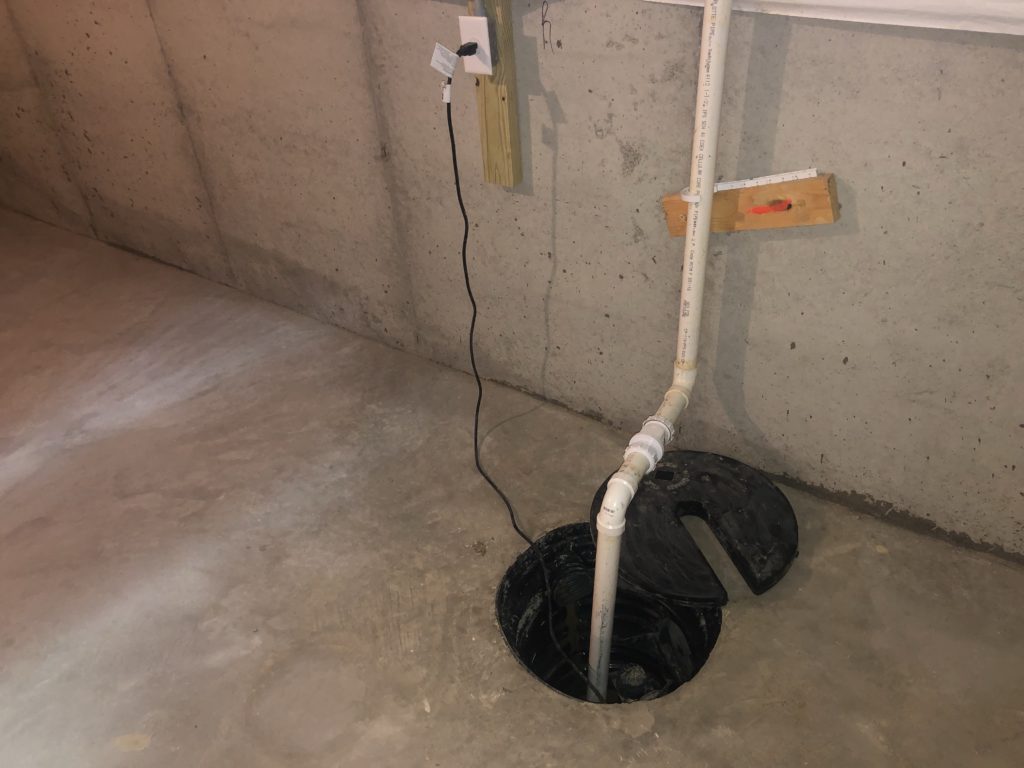Helpful Techniques for Caring for Your Sump Pump
Helpful Techniques for Caring for Your Sump Pump
Blog Article
Just how do you actually feel on the subject of How to Care for Your Sump Pump?

Sump pumps are critical components in several homes, specifically in locations prone to flooding or excessive dampness. They assist avoid water damages by efficiently eliminating excess water from cellars or crawl spaces. Nonetheless, like any other home appliance, sump pumps need routine upkeep to guarantee they function efficiently when required the most. Cleansing your sump pump is an essential part of its upkeep, and comprehending just how to do it properly can save you from costly repair work and prospective disasters.
Intro
Maintaining a clean sump pump is important for its appropriate functioning and long life. Ignoring this crucial task can result in clogs, malfunctions, and ultimately, water damages to your residential or commercial property. For that reason, learning how to clean up a sump pump is essential for homeowners who rely upon these gadgets to keep their cellars completely dry and safeguarded.
Understanding the Sump Pump
Prior to diving right into the cleaning process, it's vital to have a basic understanding of just how a sump pump functions. Normally set up in a pit or container listed below the cellar floor, a sump pump includes a number of vital components, including a pump, a float button, and a discharge pipeline. When water builds up in the pit, the float button activates the pump, which after that pumps the water out through the discharge pipeline, far from the structure's structure.
Signs of a Dirty Sump Pump
Knowing when your sump pump requires cleaning is critical for preventing possible breakdowns. Some typical signs that indicate an unclean sump pump include strange sounds during operation, decreased water flow, and visible debris in the pit. If you see any one of these signs and symptoms, it's necessary to clean your sump pump immediately to avoid any further concerns.
Getting ready for Cleaning
Before you begin cleansing your sump pump, it's essential to take some safety and security precautions. Start by turning off the power to the pump to stay clear of any electrical accidents. Furthermore, put on suitable safety gear, such as handwear covers and safety glasses, to protect on your own from dirt, debris, and potential pathogens.
Step-by-step Guide to Cleansing a Sump Pump
Shutting Off the Power
Begin by separating the power supply to the sump pump to stop any crashes while cleaning.
Eliminating Debris and Dirt
Utilize a bucket or a scoop to remove any type of noticeable particles, dust, or sediment from the sump pit. Dispose of the debris effectively to avoid it from obstructing the pump or the discharge pipe.
Cleaning the Pump and Float Switch Over
As soon as the pit is free from debris, meticulously get rid of the pump from the pit. Inspect the pump and the float switch for any indications of damages or wear. Use a soft brush or cloth to clean up the surfaces and remove any gathered crud.
Purging the System
After cleaning up the pump and float button, flush the sump pit with tidy water to get rid of any continuing to be dirt or sediment. This will assist make certain that the pump operates smoothly and effectively.
Looking For Correct Performance
Before re-installing the pump, execute a quick test to ensure that the float button turns on the pump correctly. Pour some water into the sump pit and observe the pump's procedure. If whatever is operating correctly, you can reconstruct the pump and reconnect the power supply.
Upkeep Tips to Maintain Your Sump Pump Clean
In addition to routine cleansing, there are numerous upkeep pointers you can follow to maintain your sump pump in optimum problem:
Conclusion
Cleansing your sump pump is a critical element of its upkeep and guarantees that it operates properly when you require it the most. By complying with the actions detailed in this overview and including normal maintenance into your regimen, you can extend the life-span of your sump pump and protect your home from water damages.
6 STEPS ON HOW TO CLEAN A SUMP PUMP PROPERLY
UNDERSTANDING SUMP PUMPS
Your sump pump plays a crucial role in protecting your home by managing and removing excess water. It primarily functions as a “shield”, guarding your basement against the damaging effects of water accumulation. The pump is housed in a sump pit in the lowest part of your basement, and its job is to pump out any water that collects there.
During heavy rainfalls or when snow melts rapidly, water can infiltrate your basement, posing potential risks like flooding, structural damage, and harmful mold growth. Here, the sump pump springs into action, pumping out the intruding water and directing it away from your home.
SAFETY FIRST
Before cleaning, remember to prioritize safety. Disconnect the sump pump from the power source to prevent any accidental electric shocks. Also, wear sturdy gloves to protect your hands from any sharp or dirty components within the pump.
REMOVE THE SUMP PUMP
After ensuring your safety, the next step is to remove the sump pump from its pit. Doing this might require careful maneuvering as you don’t want to damage any pump components. Once removed, clean the sump pit to remove any accumulated debris or sludge.
INSPECT THE PUMP
Inspect the pump for any visible signs of wear or damage. Check the power cord, float switch, and impeller housing. If any components look worn out or damaged, consider replacing them to ensure optimal performance.
CLEAN THE PUMP
Thoroughly clean the pump with warm, soapy water. Make sure to rid it of any dirt, gravel, or other debris that might impede its performance. You can use a toothbrush to clean the small, hard-to-reach parts of the pump.
REINSTALL THE SUMP PUMP
Reinstall the pump into the sump pit Make sure it’s positioned correctly to remove the water effectively Once it’s back in place, reconnect it to the power source TEST THE PUMP
Finally, pour some water into the pit to ensure the pump works correctly. It should start automatically and begin pumping out the water; if it doesn’t, check the power source and the positioning of the pump.
Remember, while cleaning your sump pump is an essential part of home maintenance, hiring a professional plumber for a thorough inspection and cleaning at least once a year is also important. This will ensure that your pump is in optimal condition, ready to protect your home from potential water damage.
BEST PRACTICES FOR CLEANING SUMP PUMP DISCHARGE PIPES
Regular Inspection: Regularly inspect your discharge pipes, especially during heavy rainfall or snowmelt periods. Look for any signs of blockage or damage. Early detection of problems can prevent serious issues down the line. Periodic Cleaning: Over time, sediment and debris can accumulate in the discharge pipes, impeding the flow of water. Regular cleaning helps keep the pipes clear and functioning efficiently. You can use a high-pressure water jet to effectively clean the pipes. Insulation During Winter: In colder climates, discharge pipes can freeze, blocking the outflow of water. Protect your discharge pipes from freezing temperatures by insulating them with foam pipe insulation. This will ensure the sump pump can continue to discharge water even in freezing conditions. Proper Positioning: The discharge pipe should be positioned to direct water away from your home’s foundation. Improper positioning can lead to water seeping back into the basement. Ensure the pipe is long enough and angled correctly. Installation of a Check Valve: A check valve prevents water from flowing back into your sump pit after the pump has pushed it out. Installing a check valve helps maintain the efficiency of your sump pump and reduces the risk of flooding. Minimize Pipe Turns: Every curve or turn in the discharge pipe can decrease the efficiency of water flow. By minimizing turns and bends in your discharge pipe, you can increase the efficiency of your sump pump. https://www.fullspeedplumbing.com/how-to-clean-a-sump-pump-properly9999/

As a keen person who reads on Keep Your Sump Pump Clean, It'll Keep You Dry, I assumed sharing that piece of content was worth the trouble. Are you aware of somebody else who is curious about the topic? Why not promote it. Many thanks for being here. Return soon.
Click Here Report this page